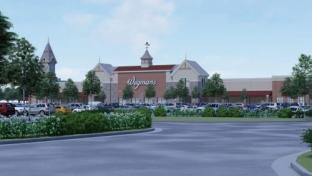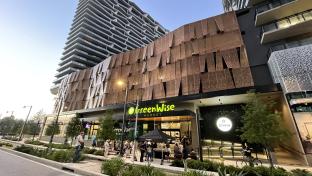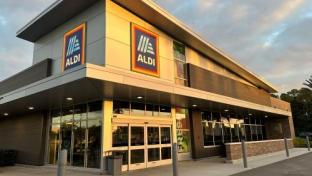A Good Year for Grocers to Go Smaller
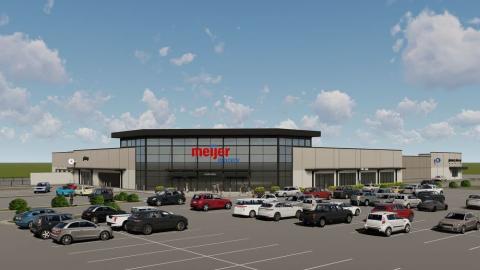
Now that the fog from the pandemic has (mostly) lifted, grocers are re-evaluating their physical-store strategies as they look to maximize profits, keep shoppers loyal and drive sales amid escalating expense pressures.
Driving through the streets of any major U.S. city, it’s easy to see the future of the grocery format: Stores are getting smaller. The average size of a grocery store in the United States is currently about 38,000 square feet, according to Cuhaci Peterson, a Maitland, Fla.-based commercial architectural firm that designs a lot of supermarkets. That number has been steadily declining for years, with small-format grocery stores now ranging in size between 12,000 square feet and 25,000 square feet, and even smaller in urban markets.
Over the past year, real estate, construction and labor costs have skyrocketed. More consumers are working from home than ever before, and many are leveraging their e-commerce options and not spending as much time in physical stores. Meanwhile, retailers are hankering for more floor space for fulfillment and other omnichannel needs. All of this means that many grocers are taking a whole new approach to real estate and macro space planning.
Rochester, N.Y.-based Wegmans Food Markets, for example, had been known for building huge stores, but started going smaller in 2021. A new report from Placer.ai shows that Lakeland, Fla.-based Publix Super Markets’ small-format GreenWise Market is generating higher foot traffic than the company’s traditional big-box stores. And this month, Grand Rapids, Mich.-based Meijer Inc., which is famous for its nearly 220,000-square-foot supercenters, will open its first small-format Meijer Grocery concept.
Here, Progressive Grocer offers a look at how retailers are thinking about grocery formats, this year and beyond.
Meijer Inc.
Meijer’s Midwest footprint of 240-plus colossally sized stores is going in a new, smaller direction. The retailer is opening its first two smaller-format Meijer Grocery stores this month. The new Meijer Grocery concept is “focused on simplifying the customer shopping experience and designed with convenience and ease in mind,” according to the company. The stores, which will span 75,000-90,000 square feet, don’t actually meet small-format standards, but they’re less than half the size of a typical Meijer store, which can cover as much as 220,000 square feet. The new Meijer format still features all of the categories that customers need for a weekly trip to restock the home, including produce and grocery; a meat counter with in-store meat cutters; a bakery equipped with in-store cake decorators; a full-service deli; a pharmacy; health and beauty care; baby, pet and consumables; and greeting cards and floral.
“By opening Meijer Grocery stores, we’re introducing a new way for our customers to shop that provides convenience, value and the great quality our customers have always come to expect from Meijer,” says Meijer President and CEO Rick Keyes. “Our customers’ needs are always evolving, and we’re committed to meeting them where they are. That’s why we’re excited to share this new Meijer experience with the Orion and Macomb Township communities.”
Meijer Grocery stores will also feature local brands across their departments, staying true to the company’s ongoing commitment to supporting local businesses.
Additionally, Meijer Grocery will offer the same saving and shopping technology that customers expect from a Meijer supercenter, including mPerks, Shop and Scan, and Meijer Home Delivery and Pickup.
The Meijer Grocery concept follows Meijer’s previous foray into smaller-footprint stores. In 2018, the grocer opened the 37,000-square-foot Bridge Street Market on the west side of the company’s hometown of Grand Rapids. The neighborhood-friendly market offers a range of fresh food and accessible convenience items in a smaller space than traditional Meijer supercenters.
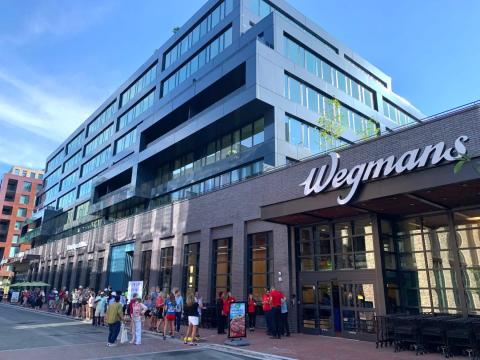
Wegmans Food Markets
Over the past few years, Wegmans Food Markets, which operates more than 100 stores across the eastern United States, has been going through what it’s now calling a real estate “reset.”
In the past, the retailer had been opening stores as large as 150,000 square feet, especially in affluent suburbs such as those near Washington, D.C. But in 2021, the grocer started going smaller, opening stores closer to 100,000 square feet in size.
In 2022, the company went even smaller: An 81,300-square-foot store launched in Virginia, the smallest of the three locations that Wegmans opened last year.
In an interview with USA Today in December, CEO Colleen Wegman said that the company is trying to get away from opening larger stores.
Wegman told the newspaper: “We used to have larger stores. We’re trying to go smaller again, and we’re finding we’re able to do the same amount of volume in a smaller store. So, we’re trying to find that right balance.”
This year, Wegmans is planning to open two stores, including an 85,000-square-foot location in Reston, Va., on Feb. 1. The new store will include a Market Café featuring fresh sushi, poké bowls, pizza, chef-created salads, sandwiches, packaged subs, and more. The site will have parking below and residential units above, and will be accessible by the Reston Town Center Metro station.
The company’s second opening of 2023 will be its first in Manhattan, located at 770 Broadway, in the former site of the Astor Place Kmart. Scheduled to open in the second half of the year, the store will occupy space on both the street and lower levels of the historic building, for a total of roughly 82,000 square feet.
According to USA Today, the company plans to open in the following additional locations over the next five years: Norwalk, Conn.; Rockville, Md.; Lake Grove, Nesconset, N.Y.; Holly Springs, N.C.; and Yardley, Lower Makefield Township, Pa.
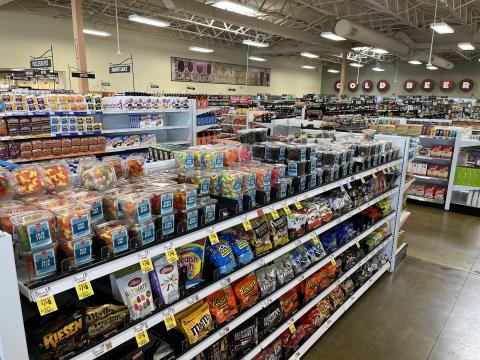
Schnucks Markets
Since 2020, 112-store operator Schnuck Markets Inc. has been in reinvention mode. That year, the St. Louis-based retailer opened a concept in Columbia, Mo., called EatWell after acquiring space from Lucky’s Market. According to Schnucks, the store is where the pleasure of food and the promise of health come together for a balanced lifestyle. In addition to offering natural food items, EatWell includes a focus on organic, local and specialty products. The company is now planning to open a second EatWell location, in 2023, this time in Chesterfield, Mo. EatWell stores span about 30,000 square feet, about half the size of a typical Schnucks Market.
In 2021, Schnucks opened another new small-format concept, Fresh, in Jasper, Ind. That store spans about 18,000 square feet.
Then, in 2022, Schnucks’ experimentation with small formats took a third turn.
Last August, the retailer opened its first Schnucks Express concept. That store is actually attached to the grocer’s EatWell store in Columbia and offers more traditional grocery items to complement EatWell’s specialty assortment, according to a press release.
“After listening to our customers’ feedback, we’ve learned that they enjoy the natural and organic offerings available at EatWell, but also are seeking the convenience of conventional grocery items,” says Schnucks Senior Director of EatWell/Health & Wellness David Isinghood. “We invite our customers to stop in and see both the expanded selection of traditional customer favorites as well as the enhanced shopping experience of the natural and good-for-you items at EatWell/Schnucks Express.”

Publix Super Markets
Publix, an employee-owned grocery chain, today has more than 1,300 supermarkets across the Southeast that average between 40,000 and 60,000 square feet in size. But the company also operates a small-format banner called GreenWise, focused on natural foods. The stores comprise about 25,000 square feet and feature a variety of organic groceries, familiar favorites, house-made specialties, and more for health-conscious and gourmet foodies alike. The store format also includes locally curated items and experience zones with products for any occasion.
Customers seem to appreciate the curated offerings from GreenWise.
According to recent data from Los Altos, Calif.-based Placer.ai, autumn visits to GreenWise in Florida were up 6.4% year over year, while Publix’s traditional-format stores saw 3.9% fewer visits.
Shoppers at GreenWise stores are also staying longer than the typical Publix shopper, according to Placer.ai. The difference in dwell times was significant when comparing GreenWise stores with neighboring Publix locations. Median dwell time for the local GreenWise in Ponte Vedra, Fla., stood at 30 minutes, while three nearby Publix locations saw median dwell times of 27, 24 and 26 minutes. The Ponte Vedra GreenWise store offers a variety of community events, such as a Free Sundae Monday, likely driving longer dwell times.
“By using the small-format concept, Publix is setting GreenWise apart and offering customers a premium grocery experience without impacting the wider Publix brand,” notes the Placer.ai report. “The success of GreenWise by Publix shows how companies can use small-format stores to experiment with brand concepts and offer experiences that are more complex and costly to provide in larger venues. By curating a shopper experience unmatched by that of larger, perhaps more traditional grocery stores, GreenWise can foster a sense of community – and encourage longer visits.”


